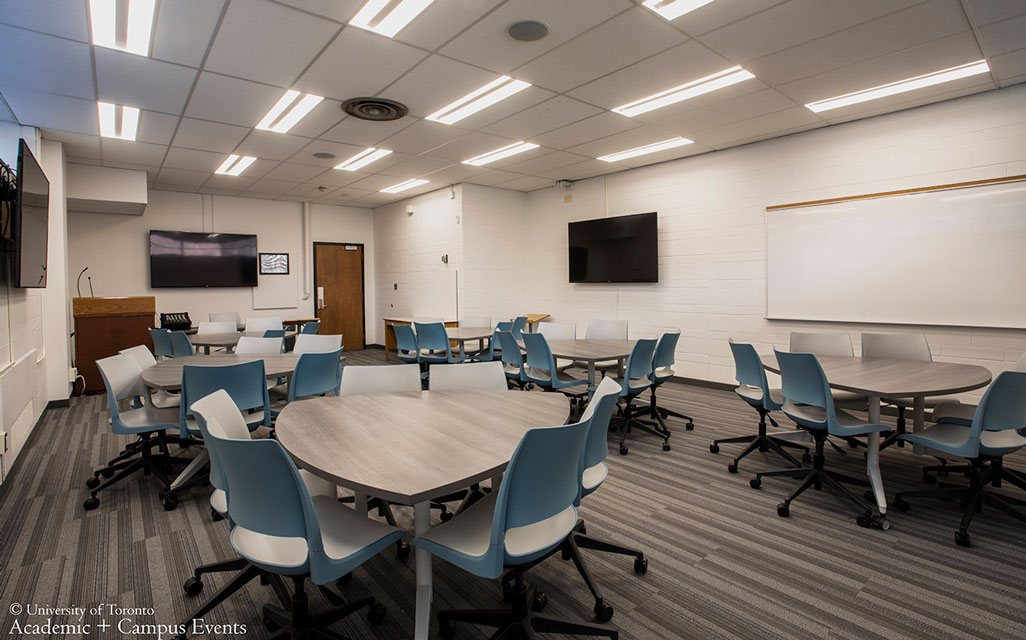Transforming the Instructional Landscape: What We’ve Learned About Transcripts


Written by Georgia Maxwell (Senior Research Assistant) and Marcus Lomboy (Design Research Assistant for Transforming the Instructional Landscape)
For the past four years, the Innovation Hub has teamed up with the Learning Space Management (LSM) Team to examine how learning environments can be improved for both instructors and students.
Transforming the instructional landscape: The results from our Pilot program are in!

Written by Nicholas Smith – Design Research Assistant for the Transforming the Instructional Landscape
What happens when you support instructors as they experiment with technology? During the Winter semester of 2021, the Transforming the Instructional Landscape (TIL) Pilot Project did just that. In the pilot, each member of our instructor cohort was provided with an individualized and adaptable classroom set-up, including high-quality recording equipment, stream decks, and monitor screens, alongside traditional teaching tools such as blackboards and lecterns. Our instructors were also paired with a technical “co-pilot” who ensured that the technology they employed ran smoothly by providing real-time support.
The Varsity Spotlights Transforming the Instructional Landscape
Transforming the Instructional Landscape: Moving Towards Learner Centric Design in Times of Change
By Philippa Gosine, Senior Research Assistant

Through our user-centered consultations, we’ve realized that learning spaces are extremely personal and important places for the people that use them. Instructors and students have a strong sense of ownership over their classrooms and want to see their individual needs and preferences in the design of learning spaces.
Project Primer: Transforming the Instructional Landscape

Design Thinking Team Lead
In the Transforming the Instructional Landscape (TIL) project, we try to understand what makes a classroom work as a productive learning environment. As this work has progressed, it has expanded to include many perspectives: we started by focusing on the student experience, but came to realize that student experiences are entangled with the experiences of other people who spend time in and around classrooms, and with the spaces and things that promote learning.
Transforming the Instructional Landscape with ACE: What instructors and students have told us so far
By Nick Feinig, Senior Research Assistant (for the ACE-Transforming the Instructional Landscape project)
What do instructors and students have to say about instructional space at UofT? Quite a lot, it seems! Beginning in the fall of 2017, the Innovation Hub undertook an initial ethnographic study combining long form empathy interviews, participant observation in classrooms around campus, and data lifted from a social media campaign as part of ACE’s Transforming the Instructional Landscape (TIL) project. Instructor feedback was also solicited through a dedicated portion of the TIL website. Analysing this data, our research team determined that both students and instructors recognize the importance of thoughtfully managed space to the learning process, while the former in particular have powerful memories associated with certain campus spaces.
Upcoming Event: Transforming the Instructional Landscape – What makes a classroom great?
By Suzie Kim, Communications Team
Shape your future classroom! As part of Academic and Campus Event’s Transforming the Instructional Landscape project, the Innovation Hub is bringing the design process into the U of T community. Join us in the Bahen Atrium and Med-Sci Lobby so we can ask you: what makes a classroom great?
Transforming Educational Spaces at UofT
By Darren Clift, Writer
Each cohort of students arrives at UofT with unique considerations and learning style preferences. Today’s students are digital natives; technology is a fundamental tool for socialization and self-improvement in their lives. Since students’ needs have changed, classrooms and teaching methods must adapt. A standard room with standard desks might not favour learning, while a standard lecture style might distract rather than inspire.
Innovation Hub Annual Report 2022-23

Check out the Innovation Hub Annual Report 2022-23. Learn about what we have been up to and discover how to get involved in the work.
Written by Julia Allworth, Manager, Innovation Projects


